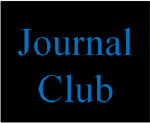In the last decades, a great effort has been invested in understanding how to utilize the spin degree of freedom of confined electrons as a component of a quantum computation device or in spintronics. In this regard, one of the main challenges is to be able to construct, control and manipulate entangled states between spins.
 First, for a double quantum dot system in a parallel geometry, I will demonstrate that by combining the effects of a flux and driving an electrical current through the structure, the spin correlations between electrons localized in the dots can be controlled at will. In particular a current can induce spin correlations even if the spins are uncorrelated in the initial state. Therefore, we are able to engineer an entangled state in this double-dot structure. Using a canonical transformation, I will provide an intuitive explanation for the results, related to Ruderman-Kittel-Kasuya-Yoshida physics driven by the bias.
First, for a double quantum dot system in a parallel geometry, I will demonstrate that by combining the effects of a flux and driving an electrical current through the structure, the spin correlations between electrons localized in the dots can be controlled at will. In particular a current can induce spin correlations even if the spins are uncorrelated in the initial state. Therefore, we are able to engineer an entangled state in this double-dot structure. Using a canonical transformation, I will provide an intuitive explanation for the results, related to Ruderman-Kittel-Kasuya-Yoshida physics driven by the bias.
In the second part of this talk I will consider the two quantum dots structure to study the decay of a maximally entangled state between the dots. The system is prepared in a perfect singlet and then coupling one of the dots to electronic baths. Two cases can be identified: In a first regime a direct electronic current cause decoherence and the entanglement, as well as spin correlations, decay exponentially fast. A second regime is found for zero or small voltages and beyond the mixed-valence regime; in this case virtual tunneling processes dominate and lead to a slower loss of coherence.
A combination of these two effects, the formation and destruction of a singlet state using a bias, can be proposed as a mechanism to control the entanglement between electrons in quantum dots.



